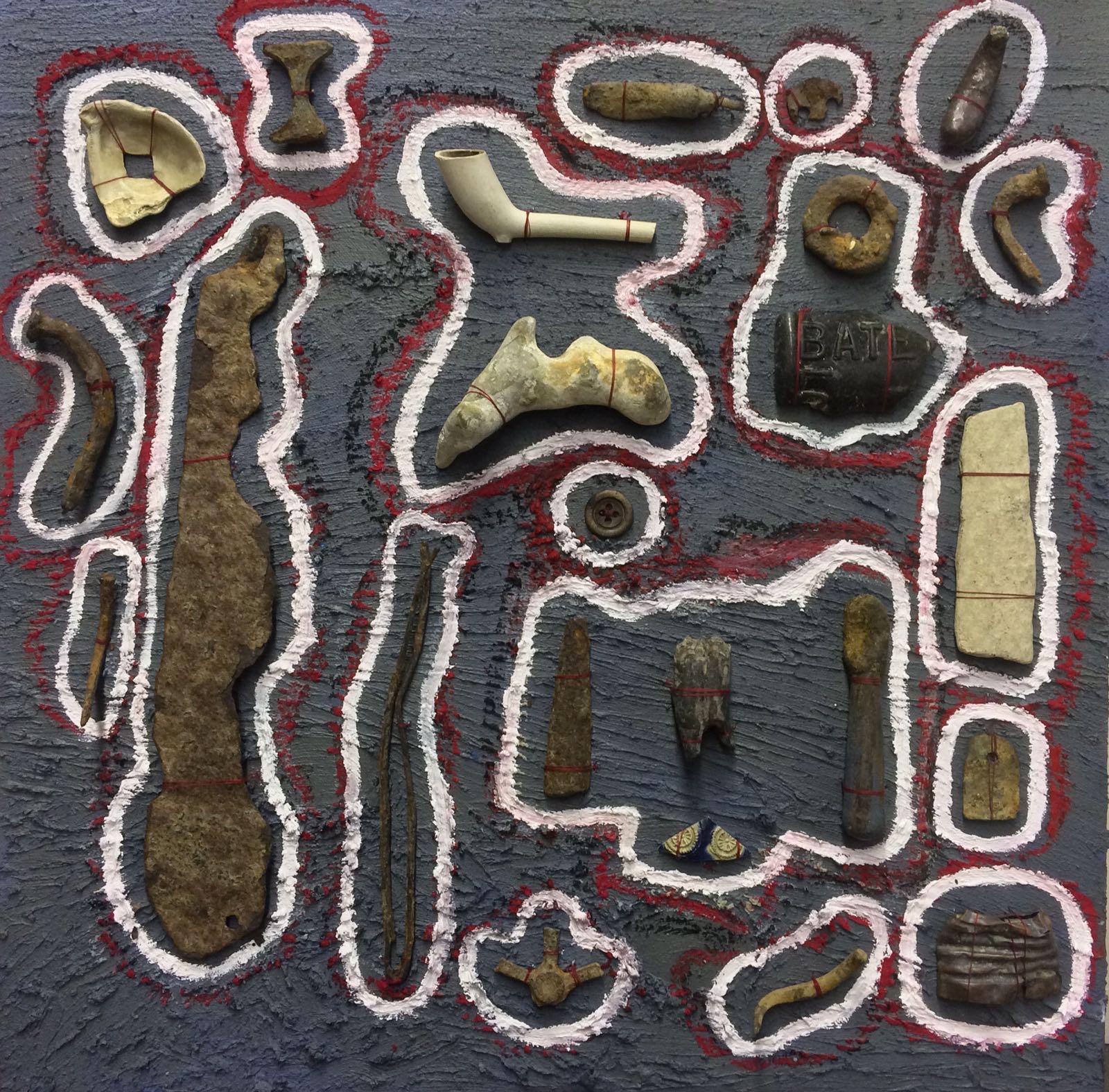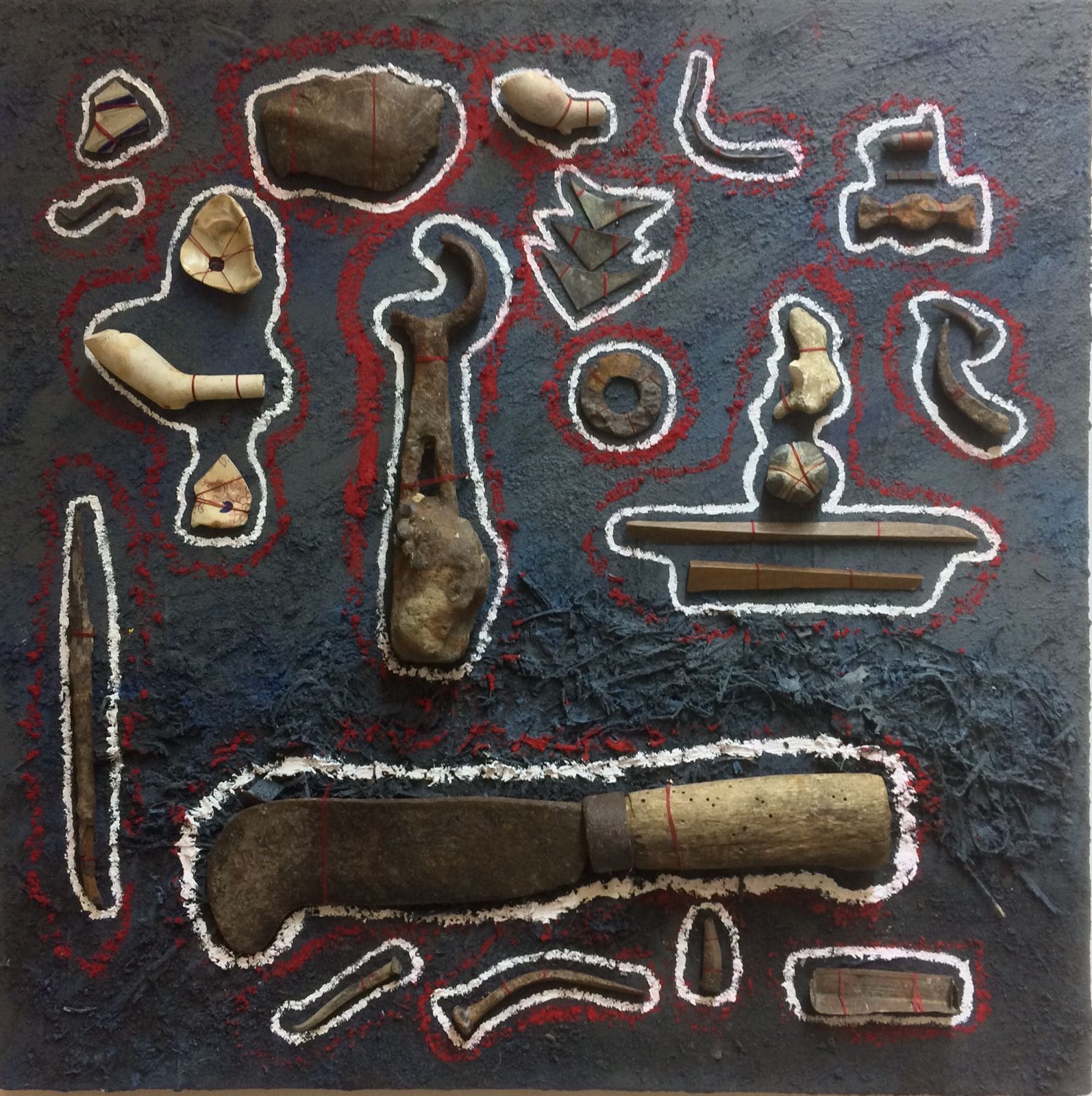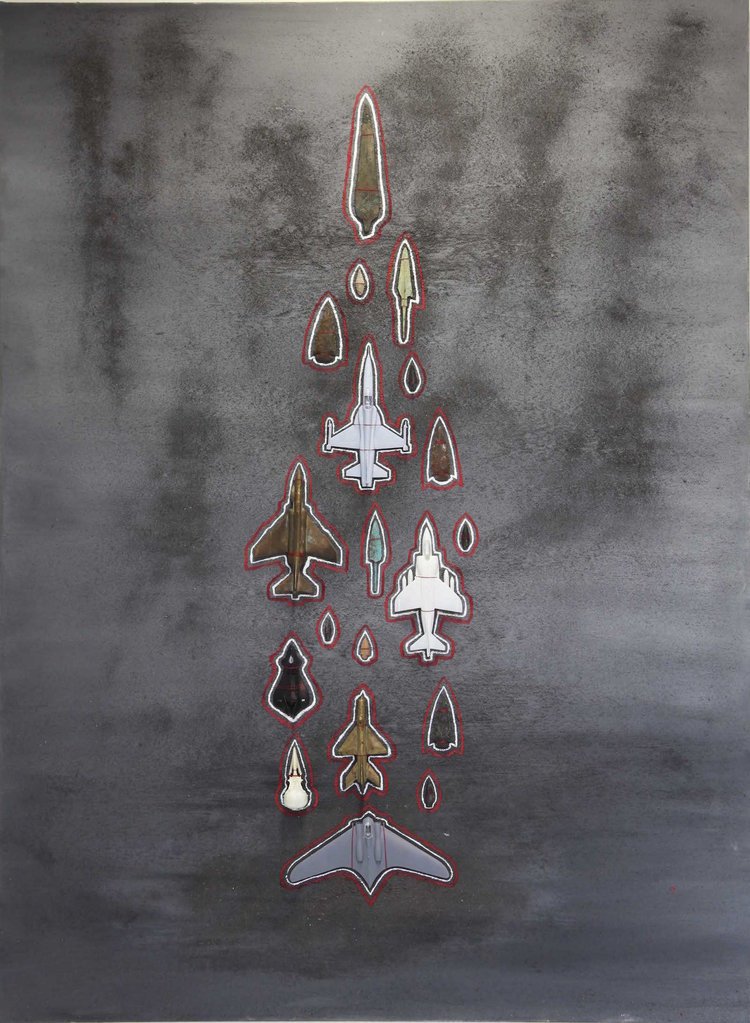





Throughout Bailey-Barker’s life he has collected objects from natural and man-made environments. Varying from Neolithic tools to contemporary refuse, some have value historically, culturally, emotionally, whilst others are simply interesting for their form or materiality. These objects have been collected from house-clearances, mudlarking, found in wildernesses and junk yards. He is particularly fascinated by tools and the way they have been animated and revered over time.
Bailey-Barker refers to his findings as route objects as they inform his abstract sculptures, which in turn function as new sacred forms, taking on the mythic qualities of the objects they draw from. Each sculpture is born from a ritual: finding a route object, excavating and observing, living with the object, categorising and assembling, extracting or imbuing narrative; resulting in an endless performance.
For example: 17th Century Pipe + flint arrowhead + goldfinch nest + axe once owned by the recently deceased Dr John Slome + crow skull + metal shard = sculpture number 88 (Peripheral Form).
The objects amassed in these works include both certified antiques and fakes calling into question the importance of authenticity in historical relics. Does it matter if an antiquity is real if it points to a true notion of history? Can we identify the facsimile and the genuine? Is there an inherent quality specific to the real?
The works have been amalgamated over 20 years. Objects found in the artist’s childhood and previously cherished are displayed beside debris recently washed up on the banks of the River Thames. Hierarchy affiliated with value is discarded, emotional attachment sacrificed and the resulting tapestries become a means of presenting abstract yet meaningful information about form and the qualities of materials. Each object in these tapestries is a clue to a specific history but the jumbled, declassified presentation suggest other possibilities of history.
Through these works Bailey-Barker questions his own relationship to time and memory presenting the possibility of the co-existence of the past, present and future.